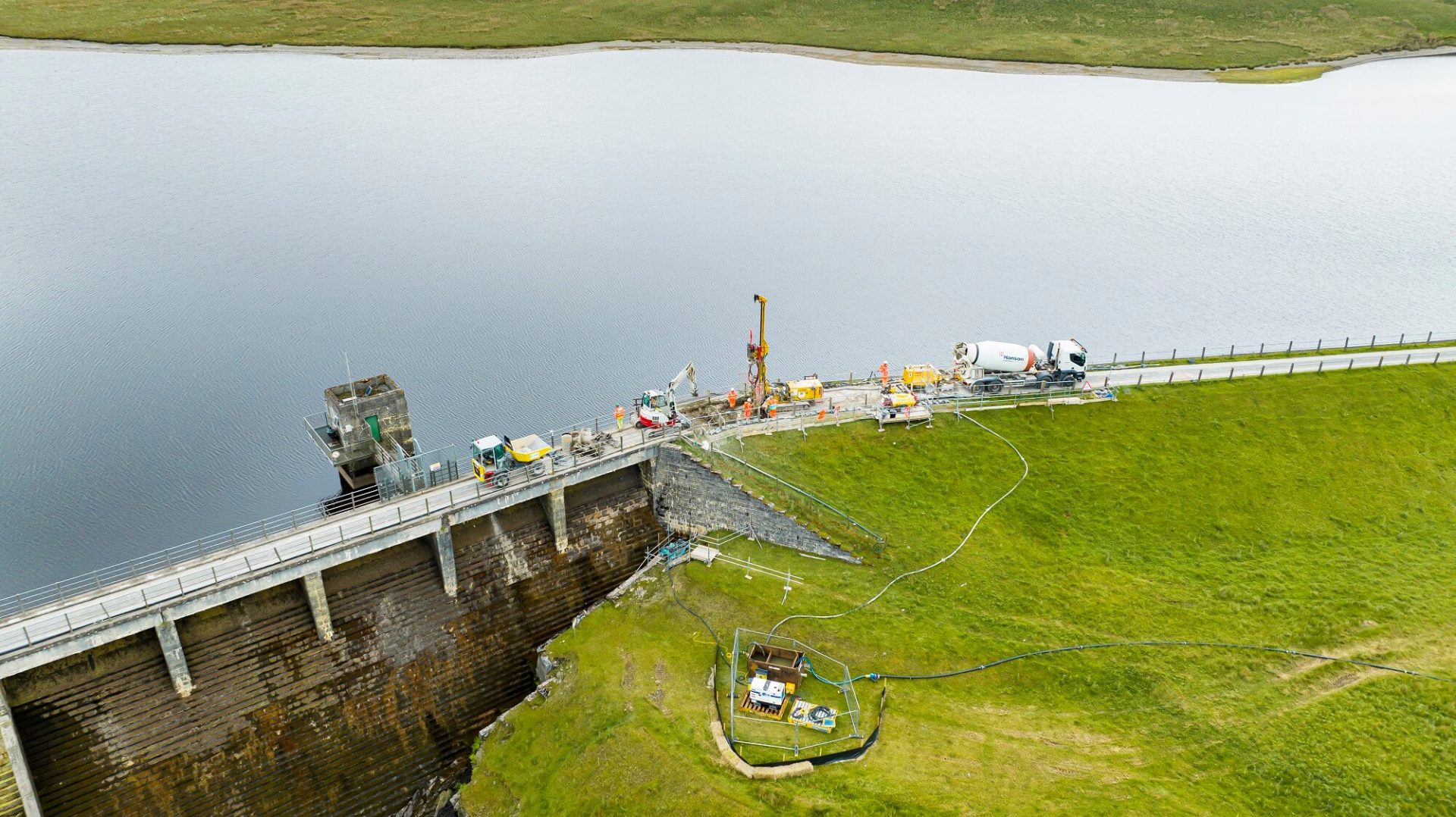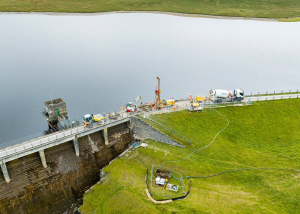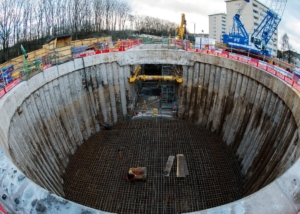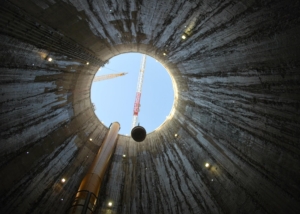THE SCHEME
North Wales’ scenic Aled Isaf Reservoir was built in 1939 to regulate the flow of the adjoining River Aled. However, after 2019 geophysical surveys identified two potential leakage paths through the earth embankments at the crest of the dam, Dwr Cymru Welsh Water (DCWW) approached Bachy Soletanche to develop a suitable scheme to repair the paths and prevent any further damage to the dam embankments.
DESIGN AND PLANNING
Bachy Soletanche’s in-house Design team was employed during a phase of Early Contractor Involvement (ECI) to help develop the scheme.
The client’s original scheme was to seal the leakage pathways using grouting techniques; however, following a detailed review of the site investigation information and the as-built details of the existing dam, Bachy Soletanche proposed an alternative solution, which consisted of two short sections of secant pile wall using low strength concrete.
Bachy Soletanche also designed a grouting scheme to be delivered after the secant wall construction.
Having worked with DCWW previously on the Marchlyn Bach Reservoir, Bachy Soletanche offered valuable insight to the client, along with a varied scope of techniques to choose from.
PILING OPERATIONS
The first phase of work involved the installation of piling platforms and guide walls, which were designed and constructed by A-squared Studio and L&A Reinforcements.
Commencing the main phase of work, Bachy Soletanche began constructing the two secant walls with 600mm diameter piles. To form the southern wall, the team constructed 15 secant piles approximately 6.8m deep, and for the northern wall they installed 33 secant piles approximately 9.6m deep.
Due to the restricted working area on the dam crest, Bachy Soletanche constructed the secant pile wall using the sectional flight auger (SFA) technique, which is ideally suited for restricted access locations. This constraint also meant that the team had to opt for a ‘just in time’ approach to concrete delivery as it became evident that the original decision to use a concrete agitator would not be practical.
The SFA method involves progressively constructing the pile, extending both the casing and auger in one metre increments until the required depth is reached. Once the prescribed depth is achieved, concrete is pumped through the auger to the base of the pile and the auger is gradually removed until concrete reaches the top of the casing. The casing is then extracted and the pile is topped up with concrete until all the casings are removed.
Along with its suitability for low headroom and restricted access locations, SFA offers an efficient, quiet, and low vibration method of piling compared to traditional techniques. On sites like the Aled Isaf Reservoir, it allows the client to repair the original structure without the weight of heavy rigs that would require major temporary works to support them.
Not only does this help the client cut costs and save time, but it also avoids the additional greenhouse gas emissions that would be produced from the use of larger rigs and the construction of major temporary works.
GROUTING OPERATIONS
Once all piling was complete, Bachy Soletanche carried out grouting to seal any remaining leakage pathways around the secant wall and the existing concrete wing wall of the dam. The grout was injected through Tube a Manchette (TaM) pipes that were designed and installed by Bachy Soletanche’s in-house Design team. The pipes were inserted through the clay core upstream and downstream of the new secant wall, and as close as possible to the concrete wing wall of the dam.
The team opted for a combination of compaction grouting, to strengthen the clay in the dam’s structure, and contact grouting, to seal any open flow paths that had not been sealed by the new secant walls.
PROJECT COMPLETION
Undeterred by the challenging access constraints on the Reservoir, Bachy Soletanche concluded its programme on time and within budget, allowing the council to reopen the local access road that had to be closed for the duration of the project.






